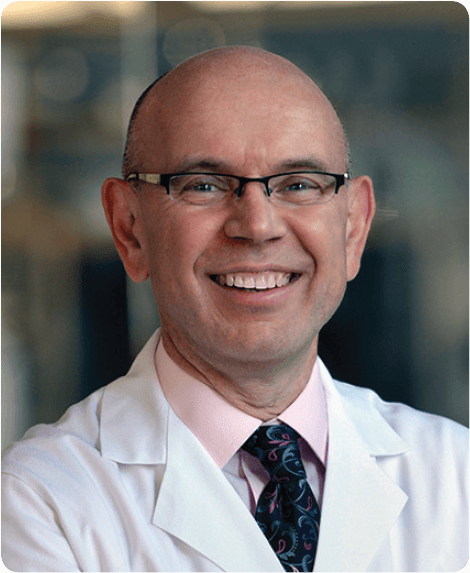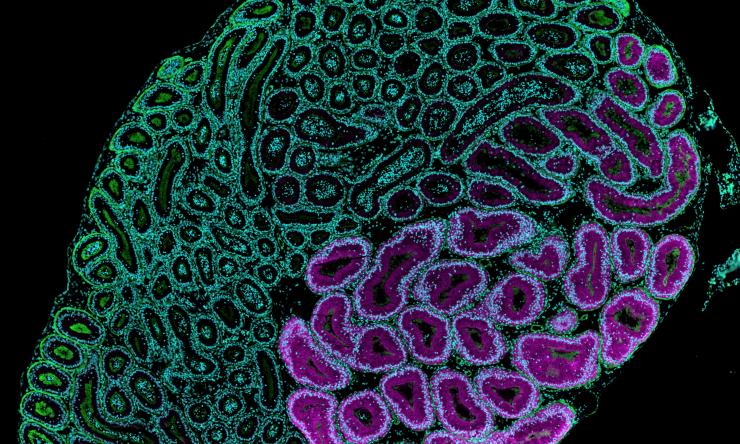Novel switch protein ‘turns on’ sperm for fertilization

For a sperm produced in the testis of a man to fertilize a woman’s egg, the sperm must first mature in a man’s epididymis, a duct that helps to transport and store sperm. However, the exact mechanisms of this maturation process are not fully known. Now, an international team of researchers from Baylor College of Medicine and Osaka University has identified a chain of events that matures the sperm and enables each one to be motile in females.
Their findings, published in the latest edition of Science, describe how a newly identified protein factor, NELL2, secreted by the testis travels in the luminal fluid, binds to a receptor on the epididymis to induce its differentiation and secretion of a second protein that helps to complete the maturation process. When NELL2 is not functioning properly, it is shown to cause male infertility.
Sperm production
Sperm are produced in the seminiferous tubules of the testis and move through the epididymis, a long, convoluted tube linked to the vas deferens, the duct that moves sperm from the testicle to the urethra. When the sperm enter the epididymis, they are not motile and are incapable of fertilization. However, in their passage through the epididymis, the sperm are provided an appropriate environment for maturation and storage pending ejaculation.
It has been hypothesized that proteins released by the testis earlier in this process could act on the epididymis to mature the sperm as they arrive in the epididymis.
“Until now the proteins working through the lumicrine system of signaling have remained elusive. While it was known that the orphan receptor tyrosine kinase ROS1 expressed in the initial segment of the epididymis is necessary for its differentiation, neither the testicular factors that regulate initial segment differentiation nor the process of sperm maturation had been fully understood,” said Dr. Martin Matzuk, professor and director of the Center for Drug Discovery at Baylor.
Identifying NELL2
The researchers zeroed in on NELL2, a protein factor secreted by testicular germ cells, as a possible lumicrine regulator of fertility.
“Using innovative genome editing technology, we generated knockout mice lacking the NELL2 gene and showed that these knockout males are sterile due to a defect in sperm motility,” explains Dr. Daiji Kiyozumi, with Osaka University and lead author. “Moreover, their infertility could be rescued with a germ-cell-specific transgene, thus excluding other sites of expression. We also illustrated lumicrine signaling by demonstrating tagged NELL2 in the epididymal lumen.”
The research team observed that spermatogenesis proceeds normally in NELL2 knockout mouse testes but their epididymis was poorly differentiated, similar to Ros1 knockout mice. Following mating, neither NELL2 knockout nor Ros1 knockout spermatozoa can enter the uterine tubes or fertilize an egg. Further investigation showed that the Nell2 knockout epididymis is incapable of processing a specific sperm surface protein essential for male fertility.
Implications for male fertility?
Elaborating on their study, Drs. Masahito Ikawa and Matzuk, both senior authors, said, “We discovered a complicated cascade of events in which disruption of any point in this lumicrine pathway causes a male to be infertile. Our findings have important translational implications for diagnostic and therapeutic research in male infertility and male contraceptive development. This unique transluminal communication pathway between tissues and organs likely functions elsewhere in our bodies.”
Others who contributed to the work include Taichi Noda, Ryo Yamaguchi, Tomohiro Tobita, Takafumi Matsumura, Kentaro Shimada, Mayo Kodani, Takashi Kohda, Yoshitaka Fujihara, Manabu Ozawa, Zhifeng Yu, Gabriella Miklossy, Kurt M. Bohren, Masato Horie and Masaru Okabe.
Funding for the study is provided by: Japan Society for the Promotion of Science, Ministry of Education, Culture, Sports, Science and Technology, Japan Agency for Medical Research and Development, Takeda Science Foundation, Eunice Kennedy Shriver National Institute of Child Health and Human Development, Bill and Melinda Gates Foundation.







 Credit
Credit


